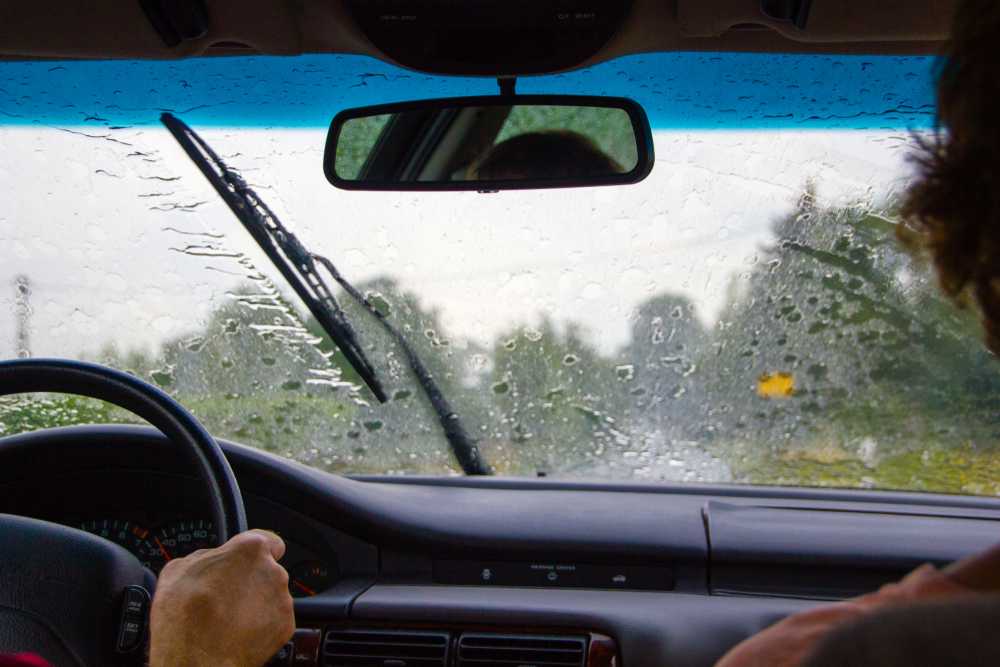 Rain accounts for an average of 46% of all weather-related car accidents, 10% of crash injuries, and 8% of crash fatalities. The combination of rain and wet pavement contributes to an average of 141,644 car accidents each year. This leads to reduced friction, changes in traffic speed, and impaired visibility that can make safe driving in the rain difficult, but you can take action to reduce your risk. Knowing how to prevent an accident in the first place is the best way to avoid serious injury. But if you can’t avoid an accident, the doctors at AICA Atlanta are available to help you heal from any injuries that may occur.
Rain accounts for an average of 46% of all weather-related car accidents, 10% of crash injuries, and 8% of crash fatalities. The combination of rain and wet pavement contributes to an average of 141,644 car accidents each year. This leads to reduced friction, changes in traffic speed, and impaired visibility that can make safe driving in the rain difficult, but you can take action to reduce your risk. Knowing how to prevent an accident in the first place is the best way to avoid serious injury. But if you can’t avoid an accident, the doctors at AICA Atlanta are available to help you heal from any injuries that may occur.
Tips to Stay Safe Ahead of Time
- Make sure all lights on the vehicle are in working order before you start driving. Headlights, brake lights, turn signals, and taillights are all necessary for communication with other drivers and may be the only way you can be seen easily in heavy rain. Turning on headlights when the windshield wipers are operating is the law in many states.
- Check your tires for proper tread and inflation to ensure they will be able to provide safe traction on wet pavement. Loss of friction from tires can lead to hydroplaning. Most states have a minimum legal tread for tires of 2/32 of an inch to ensure safe driving. You can check your tires for this minimum by using a standard U.S. penny. Insert the penny with the head of Lincoln pointed towards the inside of the tire. If the tire tread is not overlapping or above Lincoln’s head, then the tire is too worn to be safely driven upon. Poorly inflated tires also contribute to the risk of hydroplaning.
- Keep your car maintenance up to date. Safe driving means keeping all parts of the vehicle fully functional, like lights and air conditioning, which is crucial for defrosting windows. Be sure the windshield is clean and without debris or visible impediments. Promptly replace any worn or streaking windshield wipers to improve visibility.
- Get a car with anti-lock brakes. This can reduce the risk of hydroplaning or skidding and can make it safer when dealing with those dilemmas should they occur.
- Reschedule if you can. If you have the option to stay home and reschedule your plans, it is safer to do so when heavy rain is expected on the roadways. If you are sleepy or distracted, it can make it more dangerous to drive in any road conditions, but the risk is even higher when there is precipitation.
- If you have to leave the house, get as much done during the day as possible. Driving at night in the rain is more dangerous due to the reduced visibility. Flooding risks can be more difficult to assess in the dark, making it harder to gauge the depth of water as well as the condition of the road beneath.
Tips To Stay Safe While Driving
Slow down
Speed is a significant risk for hydroplaning, which can occur when even just 1/12 of an inch of rain is standing on the road.
Avoid braking hard
This can lead to skidding and hydroplaning and may cause a rear-end collision if visibility is impaired and the person behind you does not see you stop in time.
Don’t overcorrect or jerk the wheel
When a problem arises, it can be natural to want to jerk the wheel in the opposite direction to correct the issue. In the rain, contact with the road is impaired, so abrupt motion with the wheel can cause you to lose control of the vehicle entirely. Always correct by gently steering the wheel in the direction of intended travel instead.
Driving in the wheel marks of the car in front of you
The driver before you is displacing water as their car travels along, creating a space with less water to move for your own tires to grasp the pavement. Driving in their wake means your car can get better traction and reduce the risk of hydroplaning. The exceptions to this are semi-trucks and tractor-trailers, which can often displace so much water they make for blinding spray on the windshield of the vehicles behind them.
Be aware of other vehicles and pedestrians on the road
 Low visibility can make it hard to know where other vehicles are in the rain, so being extra vigilant in your awareness of their locations can help you avoid a car accident. Watch for the brake lights of the vehicles in front of you if you cannot easily see the car itself. Pedestrians may be present and may have reduced visibility themselves due to raincoats and umbrellas. Always slow down at crosswalks and intersections.
Low visibility can make it hard to know where other vehicles are in the rain, so being extra vigilant in your awareness of their locations can help you avoid a car accident. Watch for the brake lights of the vehicles in front of you if you cannot easily see the car itself. Pedestrians may be present and may have reduced visibility themselves due to raincoats and umbrellas. Always slow down at crosswalks and intersections.
Give other vehicles their space
Water on the road reduces the traction tires have on the pavement, making slowing down a low harder in the rain. It will take much longer to stop your vehicle than it does on dry roads, so you need to give yourself more room between your car and other people’s vehicles.
Use the defrost
This is useful to clear both the front and rear windshields and preserve visibility.
Avoid using cruise control or other automated driving processes
Rainy roads require alertness and awareness of one’s surroundings, as well as the ability to respond promptly to any problems.
Keep a firm hand on the wheel at all times
A wet roadway brings multiple hazards that require control of the vehicle. Avoid eating, drinking, or talking on the cell phone while driving.
Always use your seatbelt
Wearing a seatbelt helps minimize the risk of serious injury should a car accident occur. Keep a tool nearby for breaking out of the car and getting the seatbelt off should your vehicle become trapped in flowing water.
Be observant even after the rain stops
Wet pavement is a hazard itself, even when the rain has stopped falling. After it rains, oil that has spilled onto the pavement can puddle up and create dangerously slick spots on the road. These oil spots can contribute to skidding and loss of control of the vehicle.
How to Deal With Trouble
Hydroplaning
Do not slam on your brakes. Hydroplaning occurs when the car tires are separated from the pavement and slide along a shallow layer of water. There is no traction for brakes to grab onto, so they will not work to stop the vehicle. Turn towards your intended direction and take your foot off the gas. Let the car slow on its own while you focus on controlling the direction it is going.
Standing Water
Never attempt to drive through standing water on the road. Roadways can be undermined by the path of the water, taking out large parts of concrete under what appears to be a seemingly small puddle. Even shallow moving bodies of water can easily lift a car away from the pavement and carry it downstream. Once in the water, it can be very difficult to escape from the vehicle safely, as even 6 inches of water can knock a person off their feet. For this reason, it is best to find an alternative route or wait it out until the water is no longer on the road. When you see standing water on the road, remember the National Weather Service’s campaign, “Turn Around, Don’t Drown.” It could save your life.
Lack of Visibility
Pulling over is often the safest thing to do when visibility drops to the point where you cannot safely see to drive anymore. Using your turn signal to let others know your intentions, slowly ease toward an exit or the emergency lane until you can stop safely. Use your hazard lights to let others know your car is there on the side of the road.
Skidding
Do not slam on the brakes, even if this is your first instinct. It will make the situation worse and cause you to lose control of your car. Instead, keep your wheel turned in the direction you want to go and take your foot off the gas. Allow the car to slow on its own or gently tap the brakes.
Unfortunately, an accident can’t always be prevented, even when we take all the precautions mentioned above. Between 2007-2016, rain contributed to 212,647 car accident-associated injuries. Should an injury occur, it is imperative to seek appropriate medical care in a timely manner to prevent long-term complications. Our office offers advanced imaging modalities that can help us diagnose and treat your symptoms promptly. Seeing a car accident doctor with the right training and expertise can be as easy as calling AICA Atlanta and scheduling an appointment.
